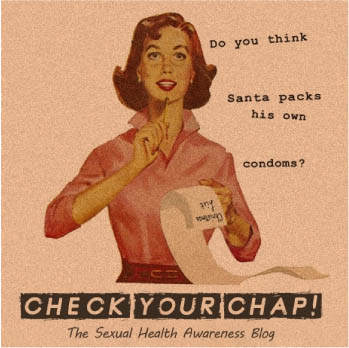
Monkeypox has garnered increasing attention due to recent outbreaks.
As of 15 August 2024, the World Health Organisation has declared monkeypox a global emergency for the second time since 2022 and issued its highest level of alert for the viral disease. This year’s figures, over 14,000 cases and 524 deaths in Africa, have already surpassed those of the previous year.
UK health officials are preparing plans in case a new type of Monkeypox virus is detected in the country, although they emphasise that the risk remains low. Currently, there are no confirmed cases of Clade 1b Monkeypox in the UK, but experts warn that cases could spread if international action is not taken.
A Closer Look At Monkeypox
Monkeypox is an infectious disease caused by the Monkeypox virus, a member of the Orthopoxvirus genus, which also includes the Variola virus (smallpox) and the Vaccinia virus. The disease was first identified in 1958 during outbreaks among laboratory monkeys in Denmark. The first human case was reported in the Democratic Republic of the Congo in 1970. Monkeypox is endemic to Central and West Africa but has spread to other regions in recent years, raising global health concerns.
A case of Monkeypox has also been detected in Sweden, where an individual contracted the infection during a visit to an area in Africa where the disease is currently spreading.
Identifying Monkeypox: Symptoms And Clinical Signs
The clinical presentation of Monkeypox is similar to smallpox but generally milder. Symptoms typically appear 7 to 14 days after exposure to the virus and can be divided into two phases:
- Prodromal Phase: This phase lasts for 1 to 5 days and is characterised by fever, headache, muscle aches, backache, swollen lymph nodes, and exhaustion. The presence of swollen lymph nodes is a distinguishing feature from smallpox.
- Rash Phase: Following the prodromal phase, a rash develops, often beginning on the face and then spreading to other parts of the body. The rash evolves through several stages, including macules (flat, discoloured areas), papules (raised bumps), vesicles (blisters), pustules (pus-filled bumps), and finally scabs. The rash can be particularly severe on the face, hands, and feet, and may leave scars.
The illness typically lasts 2 to 4 weeks, and most individuals recover without complications. However, severe cases can occur, especially among those with weakened immune systems or in populations with limited access to healthcare.

Why Has Monkeypox Been Declared A Global Emergency?
Recent outbreaks have seen a significant increase in the number of Monkeypox cases and deaths compared to previous years. The disease has also spread to other regions, including Europe and the Americas. This expansion raises concerns about the potential for wider international transmission.
The identification of new genetic variants or clades of the Monkeypox virus, such as Clade 1b, which might have different transmission dynamics or severity, prompts increased vigilance and response efforts.
By declaring Monkeypox a global health emergency aims to enhance global awareness, prompt international cooperation, and mobilise resources to address the outbreak and prevent further escalation.
How Monkeypox Is Transmitted And Who Is Most Affected
Monkeypox is primarily transmitted to humans through contact with infected animals, including rodents and primates. The disease can also spread between humans via respiratory droplets, direct contact with bodily fluids, or contaminated materials such as bedding. The virus enters the body through broken skin, the respiratory tract, or mucous membranes, which include the eyes, nose, and mouth.
Additionally, travel to endemic areas also contributes to the risk, as visiting regions where Monkeypox is common increases the likelihood of exposure.
Managing Symptoms And Treatment Options For Monkeypox
There is no specific antiviral treatment for Monkeypox, but supportive care is crucial for managing symptoms and preventing complications. This includes:
- Pain And Fever Management: Analgesics and antipyretics can alleviate discomfort and reduce fever.
- Hydration And Nutritional Support: Ensuring adequate fluid intake and nutrition is essential for recovery.
- Preventing Secondary Infections: Keeping the rash clean and applying topical treatments can help prevent bacterial infections.
How To Prevent Monkeypox
Individuals in endemic areas should avoid handling wildlife and seek medical attention if they suspect exposure to the virus. Isolation of infected individuals is crucial to prevent further transmission, ensuring that those with Monkeypox do not spread the virus to others.
Additionally, the use of personal protective equipment (PPE) is essential for healthcare workers and others in close contact with infected individuals, as it helps reduce the risk of transmission.
Vaccination also plays a role in prevention; the Smallpox vaccine has been shown to offer some protection against Monkeypox, and in certain cases, vaccination may be recommended for individuals at high risk of exposure.

Final Overview
Monkeypox remains a significant concern in endemic regions, but recent outbreaks have heightened global awareness and response. To effectively manage and control the disease, it is essential to understand its symptoms, transmission, and prevention strategies.
The World Health Organisation is actively monitoring the situation, providing guidance, and offering support to affected areas. Ongoing research into the virus, and its impact on human health is crucial for developing effective strategies to control and prevent future outbreaks.
If you start experiencing symptoms, promptly isolate yourself and reach out to your local public health authority or healthcare provider. When possible, inform your healthcare provider about your recent exposure before attending an in-person appointment.

